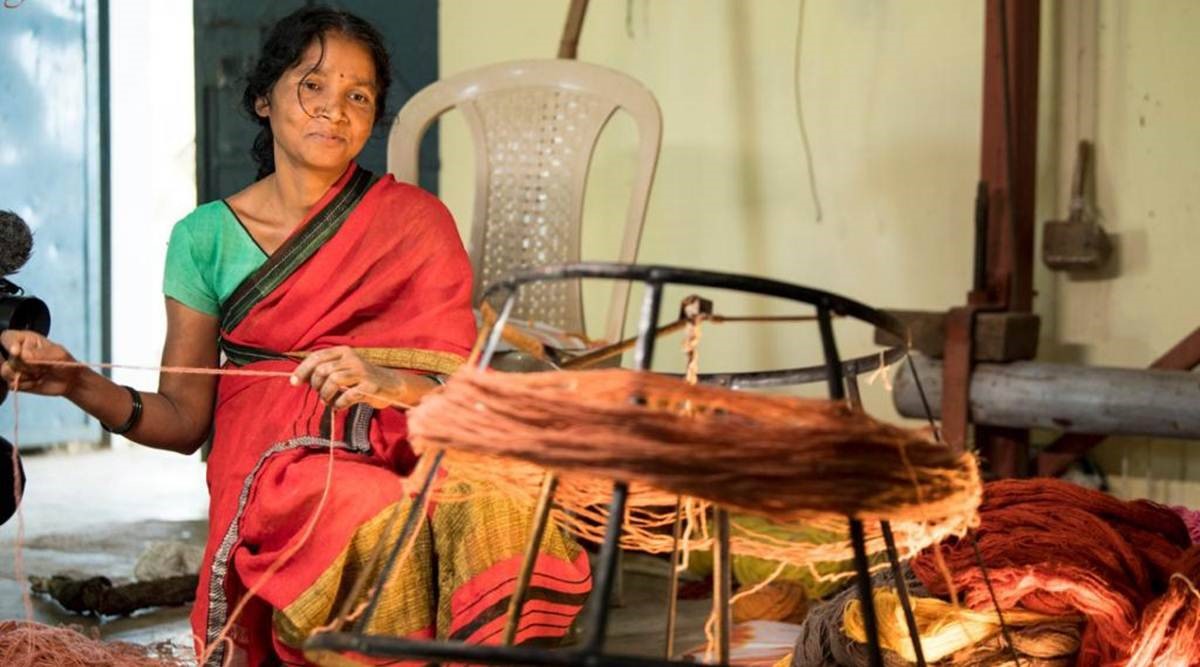In Chhattisgarh, Tibetan carpet art helps tribals weave a new life
- Chintamani Bhagat’s eyes are focused on the movements of her hands as she weaves a carpet at Chhattisgarh’s Darima, with motifs of phoenix and dragon, her favourite. “Dragons are magical, they are also symbolic of endless prosperity. When I learnt about them from the Tibbati aunty, I would imagine that every dragon I made was a little bit of magic I could create,” she said.
- Carpets with motifs of dragon, phoenix, flowers and other traditional Tibetan symbology in bright colours are now being made by tribals in Chhattisgarh and sold across the country.
- In Chhattisgarh’s Sarguja district, Mainpat village, about 365 km from state capital Raipur and 52 km from the district headquarters, has earned the epithet of mini-Tibet. In 1959, when Tibetan refugees started migrating to India, over 3,000 refugees were settled around the village and involved in roadmaking in nearby Sitapur.
- The Tibetans brought the art of hand weaving carpets with them, along with potato and taho farming, according to local residents. Then a part of Madhya Pradesh, the area saw a confluence of cultures as tribals in the area started learning the techniques from the Tibetans. “It is a labour-intensive work as everything is done by hand. After the government opened training centers in 1995, we were taught by the old Tibetan women, who would then employ us,” said Bhagat (40). She added, “The younger generation of Tibetans was more focused on getting educated and migrated to metro cities or abroad. So we were hired to provide manual labour that is traditionally done by family members.”
- After Chhattisgarh was formed, the training centres were neglected and tribals who had learnt carpet weaving started migrating to Bhadohi and Mirzapur in Uttar Pradesh. Those who didn’t migrate, like Bhagat, started working elsewhere. “There was no work, so I started tailoring. The dragons, however, stayed with me. I would try to embroider them on clothes,” she said.
- Dil Prasad Soni (45), one of the weavers, had been working in Uttar Pradesh for more than 10 years, when he learnt in 2019 that the weaving centres in Mainpat are going to be functional again and returned. “Who wants to stay away from family?” he said, adding, “I make more than Rs 15,000 per month, staying with my family.”
- Soni believes he got lucky, as he saw several of his friends return in a bad condition during the pandemic. “So many people didn’t get paid and had to cycle or hitchhike back home. Now only those who have been cut off from home are there, everyone else who had migrated is back,” he said.
- The state Gramodyog department is currently running a production centre in Mainpat and two training centres in Darima and Raghunathpur, both located about 20 km from Sarguja district headquarters, giving employment to 60-odd people. Bhagat, the master craftsperson at Darima, has seen a growth in the number of people interested to learn or refresh their knowledge. “Several people had to come back and were looking for employment, including weavers. Depending on their knowledge, we would train them. Currently, it is a three-month course,” she said.
- The department sells the carpets through handloom stores across Chhattisgarh, and through e-commerce portals.
- Chhattisgarh Handicraft Board general manager Shankar Lal Dhurvey said, “This art form had got rare, with most artisans migrating outside. However, now that we are focusing on it, our tribal artisans are coming back. As of now, 6 looms are functional, but we are looking at increasing the number to 25.”
- Another board member said the market response to cotton-based-woolen carpets has been exceptional. “Our tribals have their own art forms but carpet weaving was learnt from the Tibetans. It is keeping both the cultures alive,” he said.
- For 26-year old Shanti Bhagat, a widow enrolled in one of the training centres, the carpets are a way to live independently. “It is like sketching on a vertical frame, but with woolen yarn instead of pencil,” she said, while making red and blue clouds against a black background.

